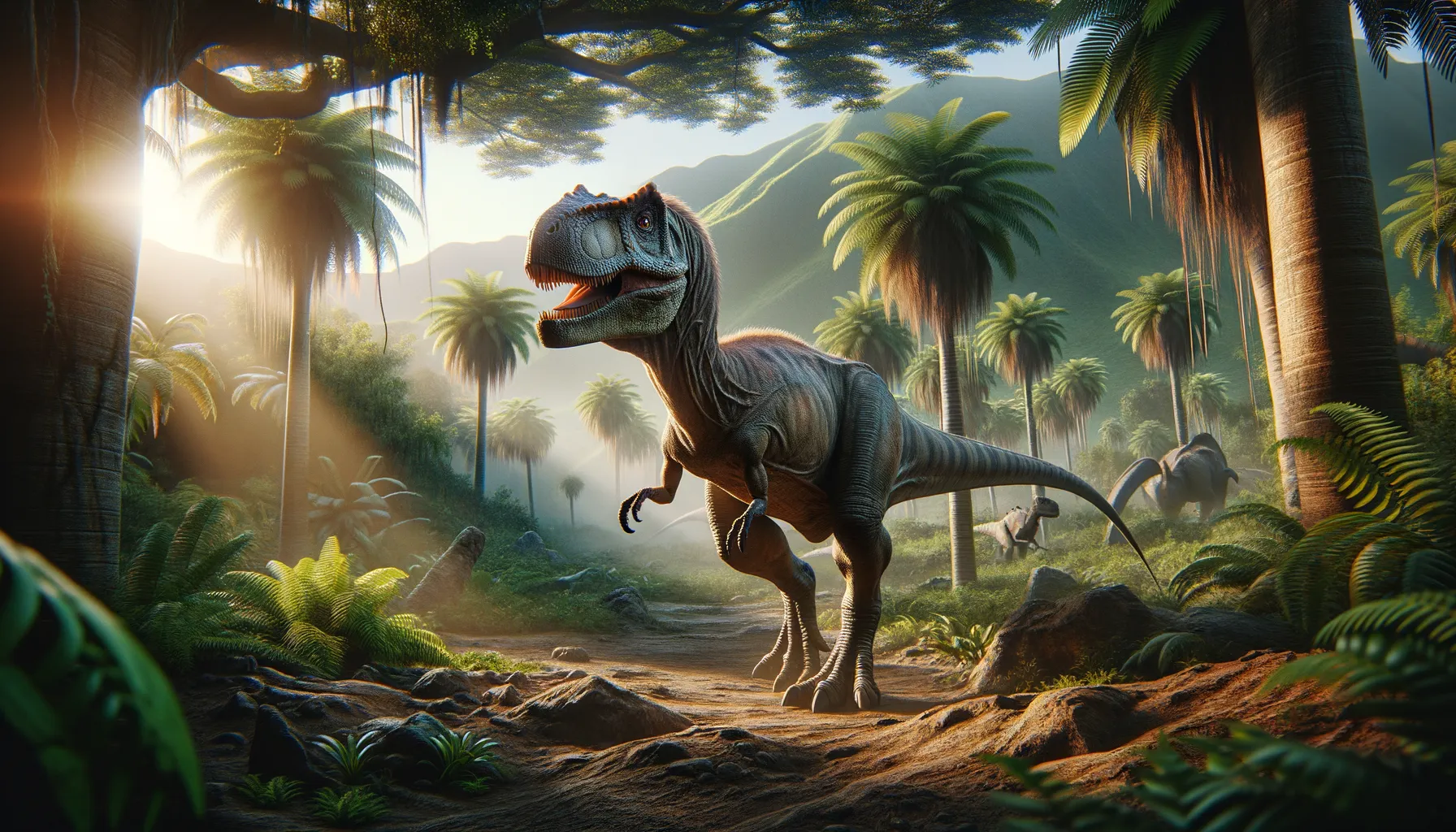
Chindesaurus
A step in dinosaur evolution.
Period
Triassic
Length
Reaching lengths of up to 3 meters.
Height
Stood about 1 meter tall at the hips.
Weight
Approximately 30 to 50 kilograms.
Chindesaurus was a bipedal dinosaur that roamed the earth during the Late Triassic period. Known for its agile build, this early dinosaur was among the first types to show characteristics that would later be common among more advanced theropods. Its fossils were first discovered in the United States, providing valuable insights into dinosaur evolution and diversity during its era. Like many early dinosaurs, Chindesaurus was relatively small compared to the giants that would come later.
Diet
Chindesaurus was likely a carnivore, preying on small vertebrates. Its diet probably consisted of insects, small reptiles, and possibly early mammals, using its agility to catch prey.
Hunting
Chindesaurus was likely an opportunistic hunter, relying on stealth and speed to capture its prey. It might have used its acute senses to track movements and ambush its targets in dense vegetation.
Environmental challenges
Living during the Triassic period meant facing a world with erratic climates and diverse ecological niches. Chindesaurus had to navigate a terrain transitioning from heavy forestation to open landscapes. It also had to adapt to the presence of existing large reptiles and early archosaurian competition, challenging its survival skills. Rapid environmental changes demanded adaptability in diet and social behavior.
Speed
Moderately swift for its size, estimated around 20 km/h.
Lifespan
Likely around 10-15 years in the wild.
First discovery
Discovered in 1984 in the Chinle Formation, Arizona.
Fun Facts
- Chindesaurus was a small, early dinosaur that lived over 200 million years ago during the Late Triassic period.
- It was discovered in the Chinle Formation of Arizona, which is where the dinosaur gets its name.
- Chindesaurus is believed to have been a bipedal carnivore, meaning it likely walked on two legs and ate meat.
- The first fossils of Chindesaurus were found in 1984, but it wasn't formally named until 1995.
- Despite its small size, Chindesaurus is important for understanding the early evolution of dinosaurs.
- Chindesaurus is sometimes compared to a small theropod, a group of dinosaurs that includes the famous Tyrannosaurus rex.
- Chindesaurus represents one of the early branches in the dinosaur family tree, providing insights into dinosaur diversity in the Triassic period.
Growth and Development
Chindesaurus likely developed quickly from hatchlings to juvenile survivalists, a feature that enabled quick adaptation to predatory pressures. Its growth phases were marked by physiological changes in muscle and bone structure to enhance speed and agility. Growth rings in fossils indicate periods of rapid growth, possibly in response to seasonal resource availability.
Habitat
Chindesaurus thrived in varied habitats ranging from arid plains to forested regions. It needed shelter and cover for hunting and evading predators, making semi-dense forests ideal. The varied geology around the Chinle Formation indicates they could exploit different resources. These dinosaurs benefited from proximity to water bodies, promoting a diverse diet and survival strategies.
Interaction with other species
Chindesaurus might have encountered various contemporaries, including early mammals and large reptiles. While it interacted with other carnivores and herbivores, competition was likely fierce. It may have existed alongside small herds or avoided large predator territories. Its adaptability gave it an edge in interacting within its complex ecosystem, utilizing both solitary and group behaviors.
Natural lifespan
Chindesaurus lived an average of 10-15 years in the wild.
Reproduction
Chindesaurus likely laid eggs, as inferred from reproductive strategies of similar period dinosaurs. Eggs were probably laid in secluded spots or communal nests to ensure safety. Hatchlings were likely independent shortly after birth, a necessity given the high predation risks. Parental care might have been minimal or non-existent, aligning with patterns seen in other extinct small dinosaurs.
Social behaviour
Chindesaurus may have exhibited both solitary and social behaviors, depending on resource availability. Solitude would have allowed for personal hunting territories, while social behaviors might have increased during mating seasons or resource abundance. Without strong evidence of pack behavior, interactions were more likely opportunistic, with temporary group formations during migrations or foraging.
Fossil locations
Fossils of Chindesaurus have been primarily found in the Chinle Formation in Arizona, United States. These discoveries have significantly contributed to understanding the diversity and evolution of early dinosaurs in the Late Triassic. The region's strata provide well-preserved fossils, offering insights into the paleoecological conditions of the time. Future excavations may reveal further details about its range and distribution.
